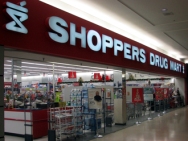Brands undergo a transformation from time to time. Some change their appearance, some launch new product lines, some make changes to their portfolio. But when a brand does a couple of these things all at the same time, it’s like watching a badly choreographed dance move.
About a month ago, Best Buy abruptly closed over 100 stores of its sister brand, Future Shop, only to reopen about 60 of them as Best Buy stores. They didn’t do this gradually or with consideration for the existing equity Future Shop had built, neither were they considerate for employees they laid off (employees have to reapply if they choose to work at Best Buy). As for customers, there were positive aspects of Future Shop that are now un-catered to. For instance, the instore auto section, that has now transitioned to Best Buy online. The service included providing guidance and also installation if required. Now that it’s online, the experience is diluted and if the wrong auto part is ordered, returns and re-ordering is a hassle. Future Shop even had better payment options on their credit card.
Best Buy in its feeble attempt to stay afloat, is making hasty choices that will do the business more harm than good. Currently focussing on Amazon as competition, they have launched “Market Place” – a section on their website where third party merchants can sell their products. Neither is this model unique to Best Buy nor will it salvage their plummeting sales figures. It’s an “I’ll have what they’re having” move. Amazon and E-bay have excelled at it with great customer service, free shipping policies, easy returns – not attributes Best Buy can hope to achieve right at the get go. Yes retail has experienced a huge online shift, but the brand experience needs to remain consistent with the traditional store. This market-place model does not do that.
Alot has been said about Best Buy shoppers not making it to check out and using the store to browse the latest technology and then purchasing elsewhere. Well, I don’t think Best Buy can or should attempt to price-match and would do better if they turned their attention to other aspects.
Not to sound like the grim reaper but Best Buy is knocking on death’s door with its current strategy(or lack of it). What the brand could be doing instead:
1. Enhance the in-store experience: Since the brick and mortar stores are still in operation, it would be a good idea to turn the focus on how to improve customer service, how to make Geek Squad more knowledgeable and helpful, find ways to reduce being under-stocked, enhance the store itself with brighter lighting and easier manoeuvrability.
2. Retain Future Shop’s merits: They might have closed the store but they should incorporate the aspects of FS that worked well for the brand(as mentioned above).
3. Improve the web experience: If they want to compete with Amazon, they shpuld start by making online purchases hassle-free in every way possible. Easy returns, free shipping where possible and providing indepth information on new technology would incentivize consumers to want to choose Best Buy.
Surviving as a Big Box electronic retailer at a time where choices are plenty and the shopper is highly tech aware is not an easy feat, even more reason for prompt transformations before the brand becomes a case study in bad business strategies.
 drugstore chain has been underway. This won’t be the first time a store attempted to straddle categories and stock a wider array of goods than their core. After all, Canadian Tire sells kitchenware and car audio under the same roof. Alot has been written about whether this will be a success or fall on its face. Primary benefits being – SDM is open late hours, some even 24/7 and the chain is known for good quality. So I guess if you feel like grilling some sirloin at 2am, Shoppers is your best bet.
drugstore chain has been underway. This won’t be the first time a store attempted to straddle categories and stock a wider array of goods than their core. After all, Canadian Tire sells kitchenware and car audio under the same roof. Alot has been written about whether this will be a success or fall on its face. Primary benefits being – SDM is open late hours, some even 24/7 and the chain is known for good quality. So I guess if you feel like grilling some sirloin at 2am, Shoppers is your best bet. ing into a Shoppers Drug Mart is to walk out with either medicine, toiletries or a bag of chocolate to feed a late night craving. While I’m there, sure I might pick up a bag of cherries if its being sold, but that’s not what I’m going in there looking for. Also, Shoppers is an in and out kind of place – not a Loblaws, where one stops to browse. Shoppers is more like a QSR trying to enter the sit-down restaurant category. They don’t have the physical space (not all locations) nor the brand positioning to be viewed as a meat and veggie retailer.
ing into a Shoppers Drug Mart is to walk out with either medicine, toiletries or a bag of chocolate to feed a late night craving. While I’m there, sure I might pick up a bag of cherries if its being sold, but that’s not what I’m going in there looking for. Also, Shoppers is an in and out kind of place – not a Loblaws, where one stops to browse. Shoppers is more like a QSR trying to enter the sit-down restaurant category. They don’t have the physical space (not all locations) nor the brand positioning to be viewed as a meat and veggie retailer. Convenience’ and ‘fresh’ don’t jive
Convenience’ and ‘fresh’ don’t jive

